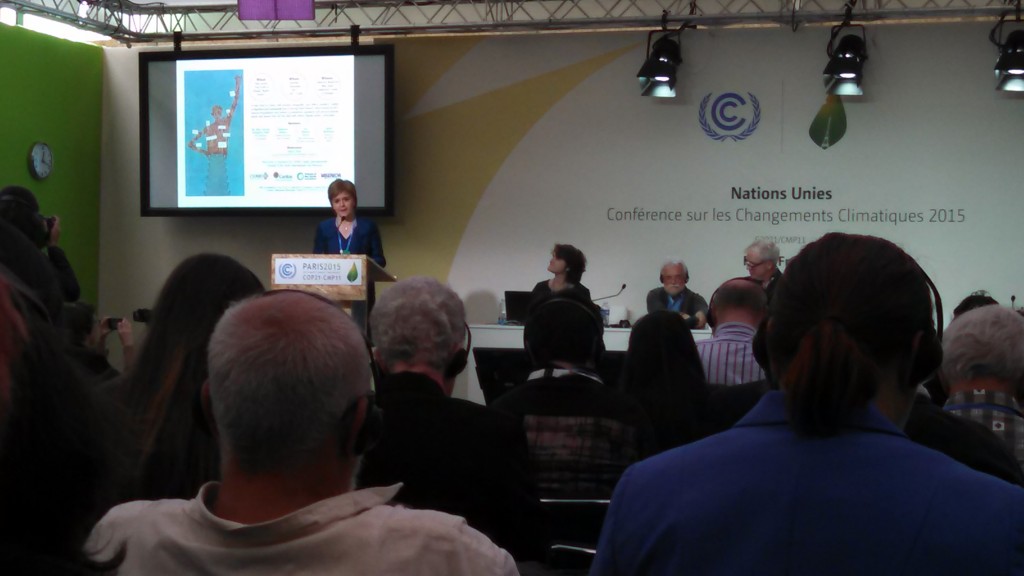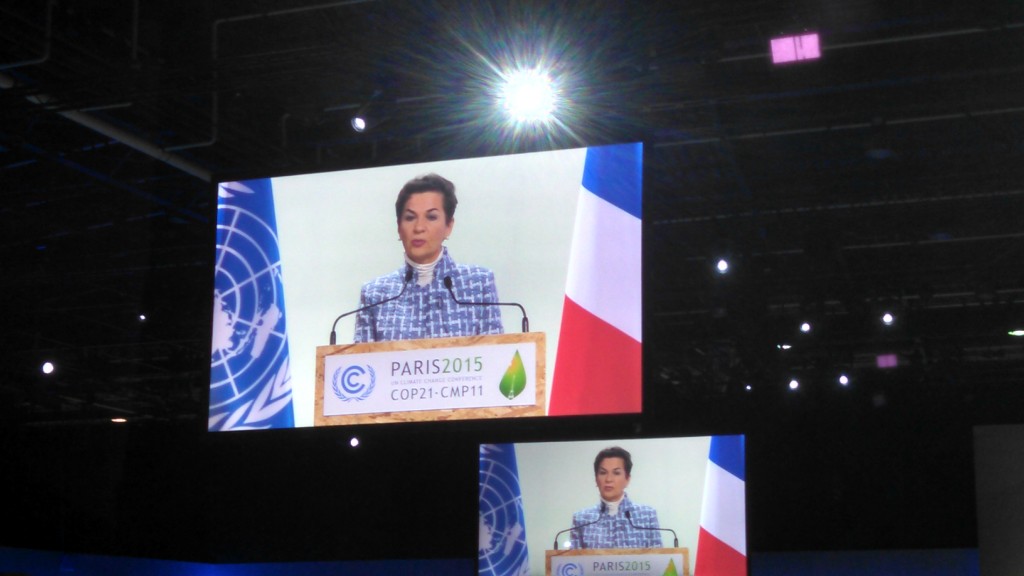While diplomats and negotiators attempted to come to an agreement this morning in the suburb of Le Bourget, thousands gathered across Paris for a series of demonstrations to mark the conclusion of the conference. These demonstrations’ fate has been in flux over the past month following the attacks in Paris, following with the French government imposed a State of Emergency and banned nearly all demonstrations. Coalition Climat 21 (which includes organizations like 350.org and Avazz) was unable to gain authorization for two demonstrations. A planned march on November 29th the weekend before the COP and what organizers said would be the largest ever civil disobedience today (Saturday 12 December) to conclude the conference. Potential demonstrations faced threats of tear case and clashes with police.
A smaller action did take place on November 29th, but the 10,000 participants were a far cry from the hundreds of thousands expected. Actions organized by 350.org and Avaaz included a human chain through the downtown the placement of thousands of pairs of shoes – including ones from UN Secretary General Ban Ki-moon and Pope Francis – at the Place de la Republique to symbolize the people who would have joined the march. A peaceful march in Paris that day clashed with police in riot gear using tear gas on protesters. Nevertheless, over 800,000 people around the world marched in solidarity as part of the Global Climate March.
Despite the protest ban, Coalition Climat 21 planned a mass civil disobedience action, though the ban deterred many, leading to lower interest than expected. Nevertheless, the coalition trained thousands of activists this week in preparation for the action and for the likely scenario of arrest.
http://twitter.com/350/status/675647112906981376/photo/1
However, early this morning, the government decided to officially authorize the demonstration. A mass text sent from Coalition Climat 21 at 6 am this morning read: “BREAKING: massive mobilisation pushes French Gov. to PERMIT #D12 #redlines action. We didn’t accept demands to change plans & prevailed. See you on the streets.” In the end, an estimated 15,000 people converged within sight of the iconic Arc de Triomphe on Avenue de La Grande Armée at noon wearing red to form red lines to symbolize the ‘red lines’ demanding negotiators and political leaders not cross (one references repeatedly during the COP was the need to keep warming well below 2 degrees Celsius). Banners read, “It’s up to us to keep it in the ground” and “Crime Climatique – Stop!”
1000s sit in under the Eiffel Tower demanding real #climatejustice and chanting #keepitintheground. It’s up to us! pic.twitter.com/Q0NISbpUvT
— 350 Europe (@350Europe) December 12, 2015
Later in the afternoon, thousands chanted, sang, and linked arms to circle Champ de Mars and sit-in in front of the Eiffel Tower. This closed out with a rally with music and speakers, including author and activist Naomi Klein. She shared her reactions to the final draft text (which had been released just hours before and had yet to be approved). She heralded the agreement as a clear sign that the fossil fuel age is ending, but called for greater action, noting how countries’ existing INDCs (see our earlier blog for an explanation) set us on path for over 3 degrees Celsius of warming. She pointed to the fossil fuel industry’s immense power in domestic and international politics as a major inhibitor of an ambitious deal at the COP.
However, she expressed hope for the coming months, highlighting the development of the climate justice movement over the past few years, citing the Keystone XL win, a growing number of fossil fuel divestment commitments, and institutions like museums cutting ties with fossil fuel companies. She highlighted plans for a series of global civil disobedience actions organized by 350.org in May in which she said thousands around the world would “go up against the biggest fossil fuel projects in the world.”
Klein’s response echoed the views expressed by 350.org and many other climate justice organizations over the past few days, and today as the parties finalized the agreement: the agreement is a major step in the right direction and provides a clear example of the effectiveness of civil society engagement. However, it is not enough and civil society and social movements will need to step up the pressure over the next few years to counter the power of the fossil fuel industry and ensure countries go above and beyond their INDCs and, for those in developed countries, pressure governments to provide financial support to less developed countries to support in adaptation and mitigation efforts.


